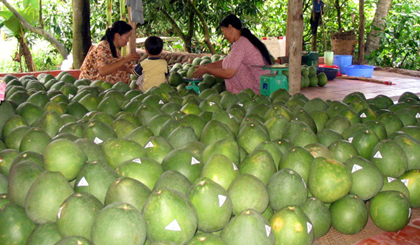Building development plans for regional exports
A national workshop on Regional Export Development Plans (REDP) has been held by the Ministry of Industry and Trade’s Vietnam Trade Promotion Agency in Hanoi.
The workshop is part of the ministry programme “Decentralized Trade Support Services for Strengthening the International Competitiveness of Vietnamese Small and Medium-sized Enterprises (SMEs)”, implemented during the 2013-2017 period.
 |
| Illustration photo. Photo: Huu Chi |
Through strengthening trade development services to potential or current SME exporters, the programme will continuously strengthen and enhance the capacity of Trade Support Institutions, Trade Promotion Organizations and SME’s in Hanoi and 39 selected provinces in northern, central and southwestern Vietnam, with regional offices in HaiPhong, Da Nang and Can Tho.
Deputy Minister of Industry and Trade, Nguyen Cam Tu, in his speech said that Vietnam’s trade turnover in 2013 reached over USD264 billion, a year-on-year rise of 15.7%, in which exports were valued at USD132 billion, up USD15.3 billion over a year earlier.
He stressed that the ministry applauded the effort and professional knowledge of domestic experts in building the export development plan for three regions (Northern, Central coastal and Southern regions). He believed that the plan will provide valuable documents for organisations to build suitable export and import plans and policies in the near future.
According to REDP, priority commodity groups to develop exports in the three regions are litchi, tea, garments and textiles, footwear and logistics in the north; coffee, pepper, cashew, honey, tuna, handicraft and fine art for export on the spot, logistics and tourism in the central and perfumed rice, fresh fruits, tra fish, clothing, handicraft and fine art, logistics and tourism in the south.
REDP is conducted by a large team of consultants, at national and provincial levels. The team assessed and analyzed the current situation of selected value chains in various sectors with regards to export performance and constraints, including international competitiveness, government policies and strategies, current role of SMEs and critical success factors.
(Source: CPV)
 về đầu trang
về đầu trang




